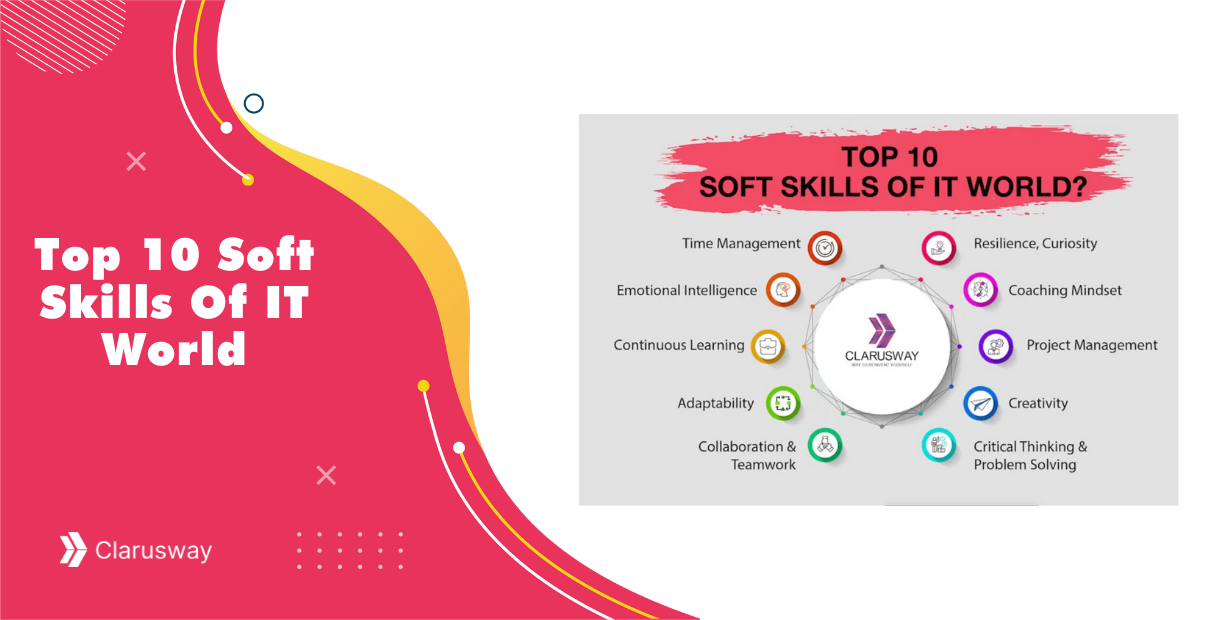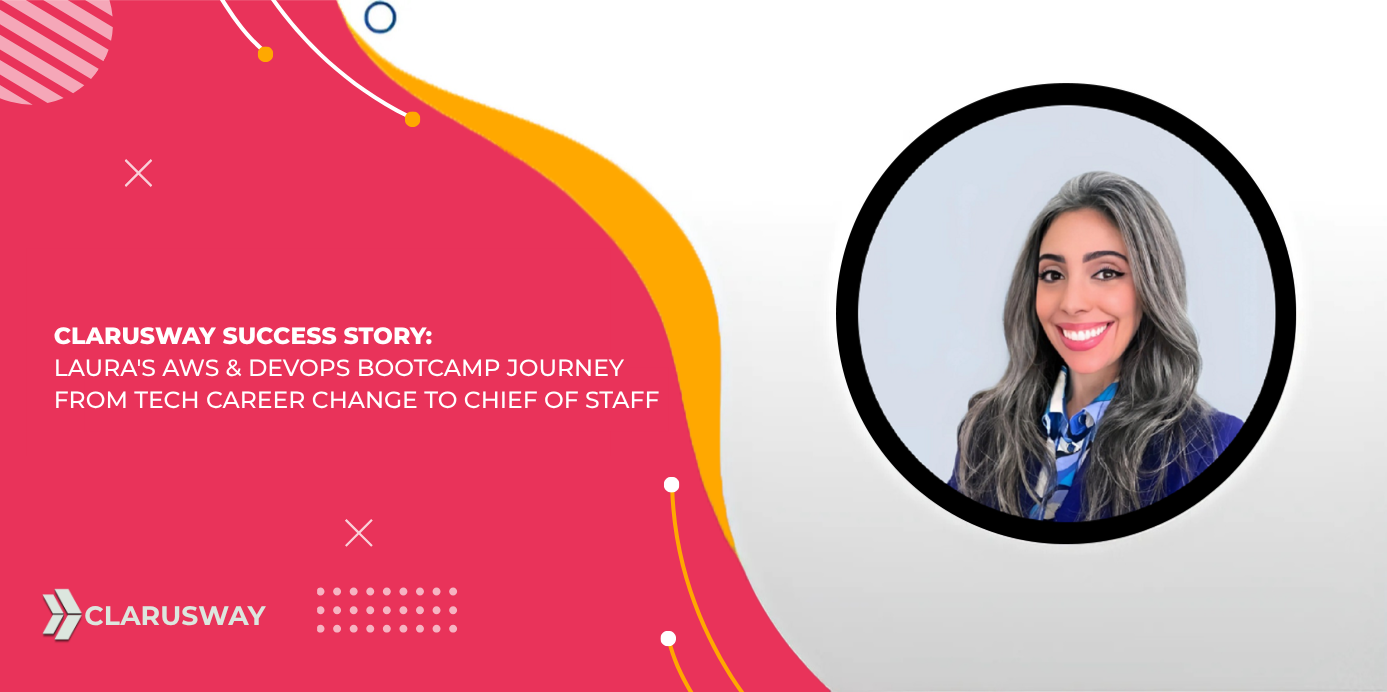Automation now drives software delivery and limits traditional manual testing roles. This guide helps QA professionals learn modern pipeline skills, understand market demand, and prepare a clear roadmap for a smooth DevOps transition. The aim is direct: convert existing quality insight into full-cycle delivery impact and secure long-term career growth.
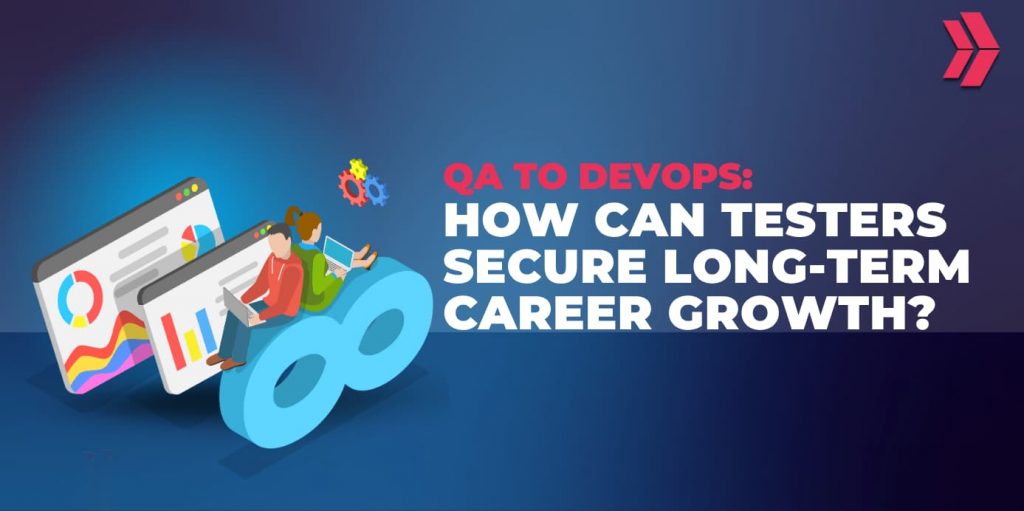
Why Is the Traditional QA Career Path Losing Momentum?
Manual testing vacancies keep shrinking as pipelines shift to automation and cloud services. Many Software Testers and QA Analysts feel career stagnation and job insecurity. Reports show fewer openings for entry-level testers, while expectations rise for scripting skills and continuous integration expertise. This climate pushes quality specialists to seek future-proof skills that match rapid delivery cycles.
How Do QA Skills Align with DevOps Needs?
A tester already checks code quality, writes clear bug reports, and collaborates across teams. These habits match the core DevOps goal: deliver reliable software fast through continuous integration (CI) and continuous delivery (CD).
- Familiarity with CI tools such as Jenkins and GitHub Actions mirrors pipeline work.
- Version control knowledge gained in Git supports infrastructure code reviews.
- Test automation logic translates to scripting deployment steps.
- Environment awareness gained from staging tests parallels cloud cluster management.
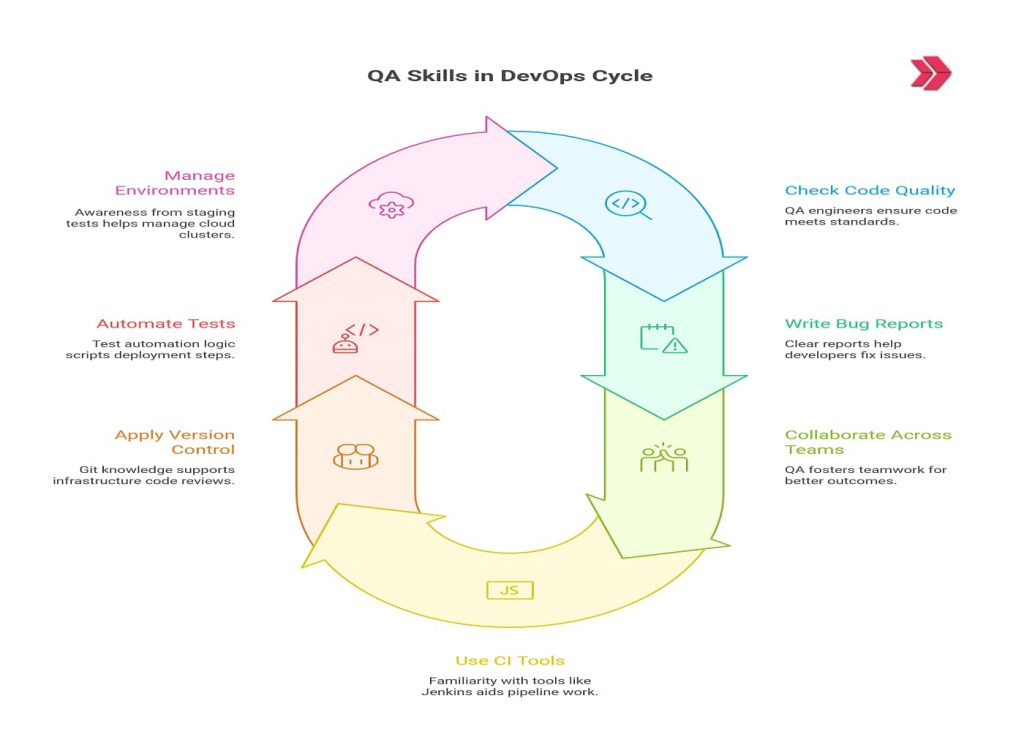
The overlap shortens the learning curve and positions a QA engineer for a quick DevOps transition.
What Market Trends Confirm Higher Demand for DevOps Expertise?
Employment in the combined category of Software Developers, Quality Assurance Analysts, and Testers is projected to grow 17 percent from 2023 to 2033 according to the U.S. Bureau of Labor Statistics. This rate is much faster than the 3 percent average for all occupations, signaling robust demand across the entire software development lifecycle, including high-value functions like DevOps. Salary figures confirm the demand gap:
| Role | Average Annual Salary (USD) * |
| QA / Test Automation Engineer | $90,000 – $130,000+ |
| DevOps Engineer | $115,000 – $175,000+ |
* This data is the average of thousands of salary data published by platforms such as Glassdoor, Salary.com, Payscale, Built In and ZipRecruiter for 2025.
Remote-first firms rely on cloud-native stacks that combine AWS, Kubernetes, and Terraform. Engineers who manage pipelines, container clusters, and Infrastructure as Code (IaC) attract stronger pay and strategic influence over release health.
Which Skills Are Needed to Move from QA to DevOps?
A focused upgrade plan speeds progress:
| Skill Cluster | Key Tools | Practical Outcome |
| Version Control | Git, pull requests, tags | Safe code and IaC changes |
| CI/CD Pipelines | Jenkins, GitLab CI, GitHub Actions | Automated tests and deployments |
| Containers | Docker images, Kubernetes pods | Reproducible runtime environments |
| IaC | Terraform, AWS CloudFormation | Declarative infrastructure |
| Cloud Services | AWS EC2, S3, IAM; Azure equivalents | Scalable hosting and storage |
| Monitoring | Prometheus, Grafana alerts | Real-time reliability metrics |
These skills build on existing automation logic while extending reach to production systems.
How Does a QA to DevOps Roadmap Look in Practice?
An effective QA-to-DevOps roadmap is a step-by-step skill-upgrade sequence that transforms testing expertise into full-cycle delivery ownership:
- Gain cloud foundations with a free AWS account.
- Strengthen Git workflows via branching and pull-requests.
- Build a basic CI pipeline in Jenkins or GitHub Actions.
- Introduce Infrastructure as Code with Terraform.
- Package apps in Docker and test in staging.
- Add Prometheus + Grafana monitoring.
- Publish a public portfolio that proves the new skills.
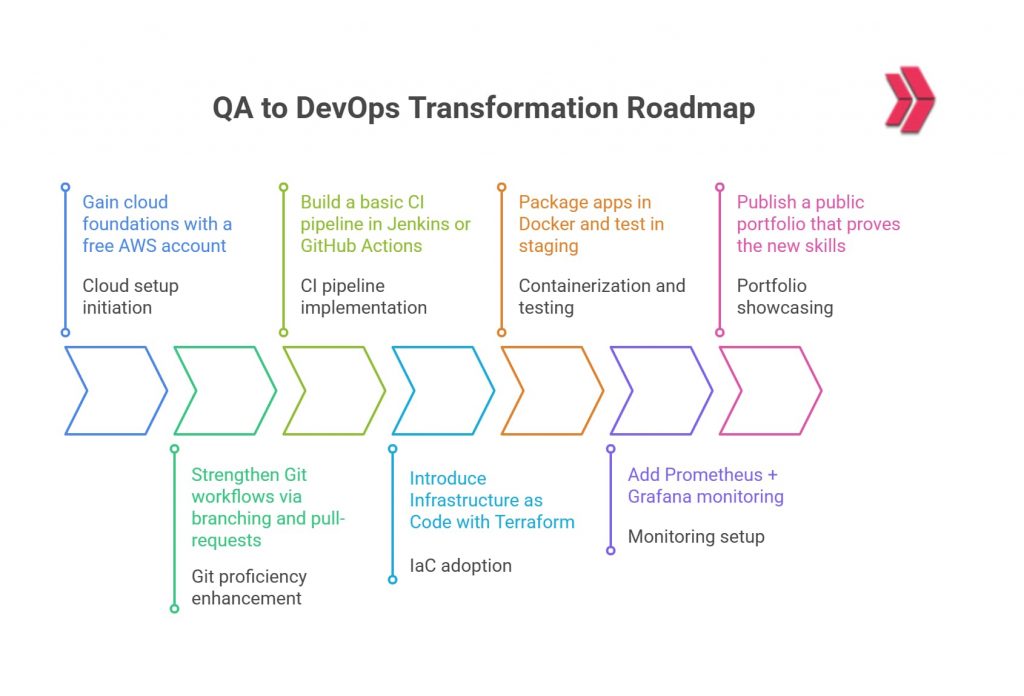
How to Gain Cloud Foundations?
Open an AWS free-tier account. Launch a virtual machine, attach storage, and review identity rules. Explore cost dashboards to link resource use with spend. This step connects environment awareness from testing to real infrastructure decisions.
How to Strengthen Git Workflows?
Create feature branches for every change, write concise commit messages, and guard the main branch with pull-request checks. Tie each merge to a test case or IaC update. This habit lays a safety net for pipeline triggers.
How to Build an Initial CI Pipeline?
Select Jenkins or GitHub Actions. Run unit tests on each push, then deploy to a staging server when checks pass. This exercise re-uses test automation scripts while adding delivery steps.
How to Introduce Infrastructure as Code?
Write a Terraform file that spins up a network and web server. Store it beside test scripts in the repository. Run a plan, review changes, then apply. Versioned IaC offers repeatable environments and clear audit trails.
How to Add Container Skills?
Package a sample API in a Docker image. Run it locally and in staging to ensure parity. Push the image to a registry. Kubernetes can later handle cluster scheduling, mirroring multi-environment test insight.
How to Integrate Monitoring and Alerts?
Attach Prometheus to the sample API, build a Grafana dashboard, and set an alert for error spikes. Monitoring turns passive quality checks into proactive reliability guardrails.
How to Publish a Portfolio That Shows Proof?
Push projects to GitHub with README files, diagrams, and pipeline screenshots. Recruiters scan portfolios for clear evidence of CI/CD, IaC, and cloud usage. A public record demonstrates job-ready skill.
Which Concerns Hold Testers Back and How Can Facts Dispel Them?
The following questions capture key concerns about the QA-to-DevOps move, and the facts listed beneath each one provide clear answers.
Can a QA Engineer Become a DevOps Engineer?
Yes. Case studies reveal testers who upskill in Git, pipelines, and cloud reach junior DevOps titles within a year. The analytical mindset gained in testing eases the DevOps learning curve.
Is DevOps Too Technical for a Tester?
DevOps relies on process control and small scripts, not advanced theory. Step-by-step labs turn intimidating dashboards into daily tools. Consistent practice beats formal pedagogy.
Can DevOps Be Learned Without a Coding Background?
Basic scripting accelerates tasks, yet systematic thinking and problem solving matter more. Many successful DevOps professionals began in manual testing or support roles before writing code.
Do Employers Require a Computer Science Degree for DevOps?
Hiring managers value demonstrable skill. A portfolio of pipelines, IaC plans, and monitoring dashboards often outweighs academic credentials.
How Do QA and DevOps Salaries Compare?
Average U.S. data shows DevOps pay exceeding QA by roughly $25000 – $45000 per year. The variance stems from responsibility for live systems, scalability, and on-call duties.
Which Training Paths Serve QA Professionals Best?
Structured courses reduce guesswork. A program labeled DevOps course for beginners or AWS and DevOps course for QA professionals often includes:
- Hands-on labs: CI/CD pipelines, container orchestration, blue-green deployments.
- Mentorship: Experienced engineers review project code and answer questions.
- Internship projects: Team assignments in live cloud accounts.
- Resume support: Guidance on highlighting version control, IaC, and monitoring achievements.
Clarusway delivers an online track that matches these criteria and has guided many testers through a successful transition.
How Long Does a QA to DevOps Transition Take?
A tester who studies part-time can complete the skills roadmap in six to nine months. Progress speed depends on prior scripting comfort and available practice hours. Regular project milestones sustain momentum and reinforce retention.
What Is the Final Verdict on Moving from QA to DevOps?
Quality Assurance experience supplies a solid base in risk control, process insight, and cross-team communication. By adding Git mastery, CI/CD pipelines, Infrastructure as Code, container skills, and cloud knowledge, a tester gains the capabilities of a DevOps Engineer. Market indicators show higher demand, stronger pay, and greater strategic influence. Career stagnation turns into growth when continuous delivery and reliability become daily work. The roadmap is clear; the opportunity stands open. Embracing the transition secures long-term relevance in modern software delivery.

